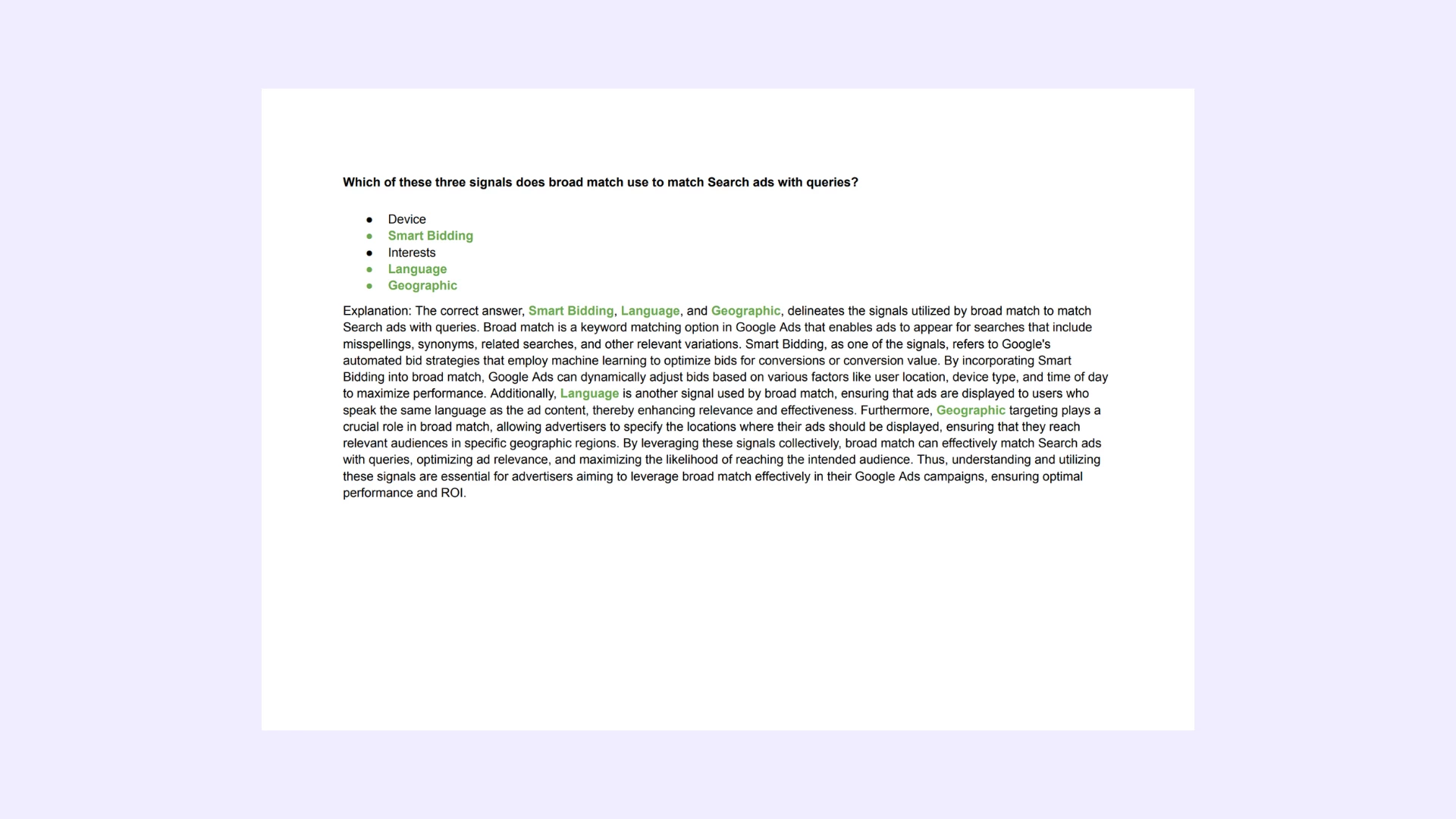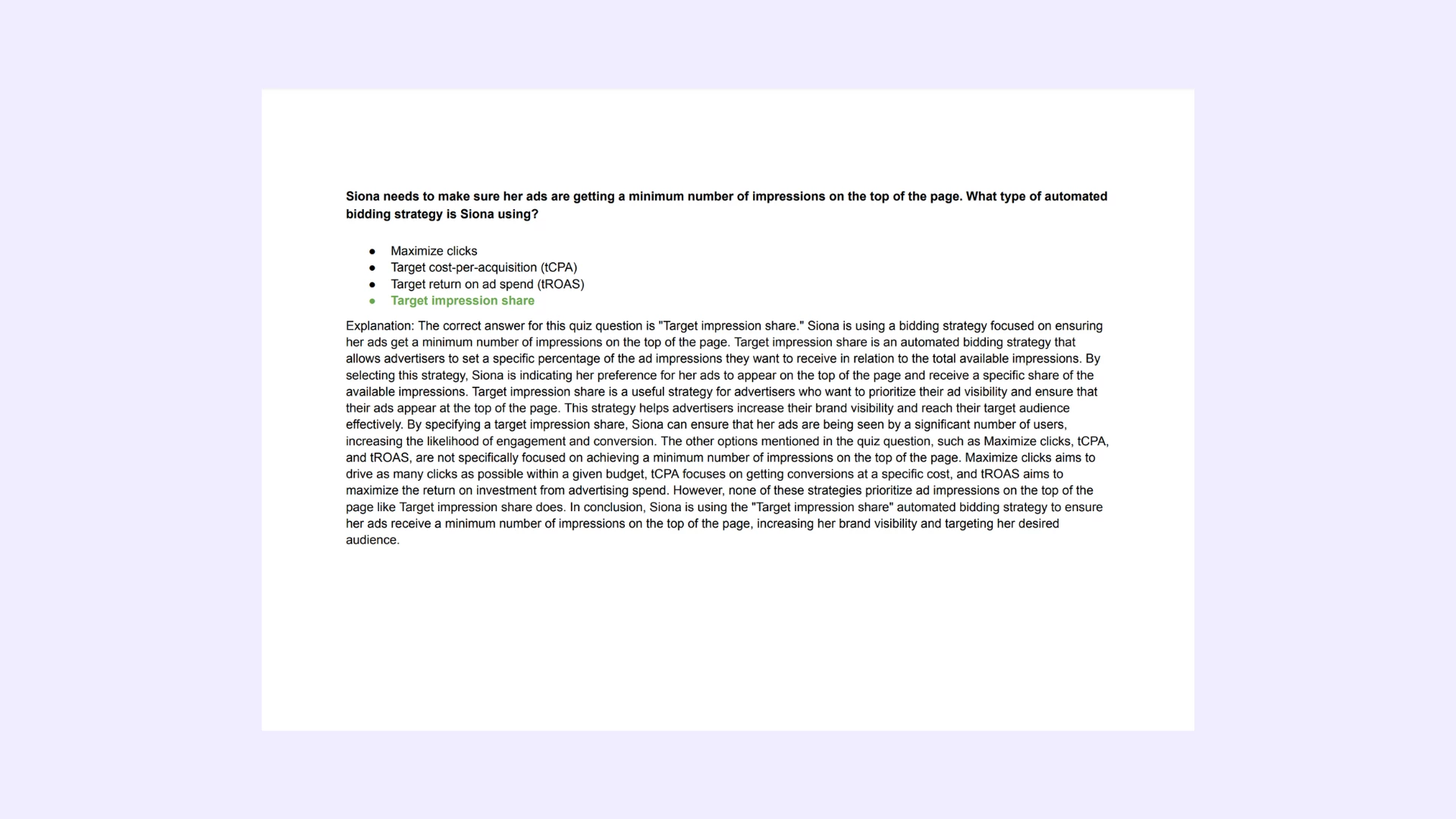A marketing manager is closely monitoring their data to see how effectively their ads are driving online sales and generating leads through sign-ups. When the marketing manager compares Google Ads data with their offline data, they see a difference in the number of sign-ups in Google Ads vs. their offline data source. Assuming everything is working as intended and the issue lies with when a conversion was counted, what's likely causing this data discrepancy?
Google Ads reports conversions against the date/time of the click that led to the conversion. Depending on the other data source, it might use the date/time of the conversion itself.
Google Ads reports conversions against a unique ID of the event that led to the click. Depending on the other data source, it might use the click of the conversion itself.
Google Ads reports views against the device type of the view that didn't lead to a conversion. Depending on the other data source, it might use the date/time of the conversion itself.
Google Ads reports clicks against the date/time of the event that led to the conversion. Depending on the other data source, it might use the click of the conversion itself.
Choose an option to see if it’s correct. Check the explanation below. Learn Smarter, not Harder.

Google Ads Roll. Includes Answers for Every Real Google Ads Certification Exam.
All-in-One: Get all Google Ads exams answers with explanations in one bundle. This package includes answers for every current Google Ads certification. Regular updates to reflect the latest exam version. -> See what's included.
Questions | Answers | Explanations. Free Lifetime Updates.


Need a single cerification exam answers? Check out our -> list of certification exams answer keys. Learn Smarter. Obtain or Renew your certificates with peace of mind!
Explanation: A marketing manager is closely monitoring their data to see how effectively their ads are driving online sales and generating leads through sign-ups. When the marketing manager compares Google Ads data with their offline data, they see a difference in the number of sign-ups in Google Ads vs. their offline data source. Assuming everything is working as intended and the issue lies with when a conversion was counted, what’s likely causing this data discrepancy?
Explanation: The likely cause of the data discrepancy between Google Ads and the offline data source is that Google Ads reports conversions against the date/time of the click that led to the conversion, whereas the offline data source might use the date/time of the conversion itself. This option is correct because Google Ads attributes conversions to the date and time when the user clicked on the ad that eventually led to the conversion action, regardless of when the conversion actually occurred. In contrast, the offline data source may record conversions based on the date and time when the conversion event occurred, such as when a user signed up for a service or made a purchase, without considering the timing of the initial ad click. As a result, discrepancies in conversion counts may arise when comparing data from Google Ads, which attributes conversions to the click time, with data from offline sources that track conversions based on the conversion event time. Understanding this difference in attribution methodologies is crucial for reconciling discrepancies and accurately assessing the effectiveness of advertising campaigns across different channels and touchpoints. The other options listed—reporting conversions against a unique ID of the event, reporting views against device type, or reporting clicks against the date/time of the event—do not accurately describe the attribution process in Google Ads and are therefore incorrect choices.
Were do I find this certification program?
This certification program is available on the Google SkillShop Platform. With our file, you can get certified in just a few minutes. Free updates are included.
Save time on exams and spend more time practicing.
Best-value Guides
- Special Bundle Offer Google_Ads_Roll
- Special Bundle Offer HubSpot_Exams_Roll
- Special Bundle Offer Google_SkillShop_Roll
- Special Bundle Offer Marketing_Platforms_Roll